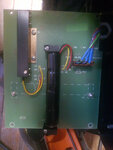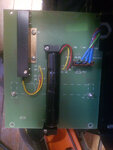cmm5559
Newbie level 3
My boss is asking me to construct a VLF unit to detect ground fractures. I understand the principles and have a general construction scheme laid out but I know absolutely nothing about RF antennas. I'm trying to mimic an discontinued unit that we currently posses. It's instruction manual is a very high level description of what it has inside. It contains "two 15 cm long ferrite-rod antennas, each wound with thousands of turns of wire."
We are looking to receive the 24 kHz frequency from Maine. Our existing unit was constructed in the 60's so I am trying to to learn three things:
1.) What kind of ferrite rod and wire do I use?
2.) How many wraps of wire do I need to get down to 15 to 30 kHz range?
3.) I would like to improve on the unit from the 60's, can I use smaller rods/better wiring to cut down on size and weight?
This is nowhere near my area of expertise so any help would be greatly appreciated.
Thanks in advance.
We are looking to receive the 24 kHz frequency from Maine. Our existing unit was constructed in the 60's so I am trying to to learn three things:
1.) What kind of ferrite rod and wire do I use?
2.) How many wraps of wire do I need to get down to 15 to 30 kHz range?
3.) I would like to improve on the unit from the 60's, can I use smaller rods/better wiring to cut down on size and weight?
This is nowhere near my area of expertise so any help would be greatly appreciated.
Thanks in advance.

